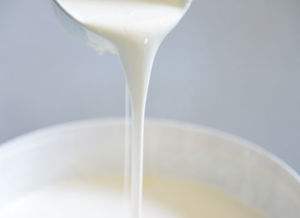Emulsion of vinegar and propylene

The copolymerization of vinyl acetate and monomers is designed to modify the emulsion. For example, the copolymerization emulsion of N and hydroxymethyl acrylamide is hydroxymethyl, and then cross-linked by heating. This is a typical way to improve the heat resistance and solvent resistance of vinyl acetate emulsion. There are three purposes of copolymerization of vinyl acetate, acrylate, vinyl ester, maleate and fumarate.
1.for internal plasticization. The vitrification temperature of vinyl acetate is about 27 C, and when it is used as adhesive and paint at room temperature, plasticizer is usually needed because it can not form complete film. The film made by adding plasticizer emulsion will harden with the evaporation loss of plasticizer. In order to overcome this shortcoming, it can be copolymerized with monomer that can make soft polymer, and the plasticized monomer must have good copolymerization with vinyl acetate. The copolymerization of acrylate and vinyl acetate is good, and the copolymer emulsion can be easily made.
2.In order to improve the water resistance and alkali resistance. The water absorbability of vinyl acetate and high acrylic ester is smaller than that of polyvinyl acetate, and it is not easy to be treated by alkali. This performance meets the requirements for the use of adhesives and coatings, and is particularly suitable for the use of alkali resistant concrete bonding and coatings.
3.in order to improve the bonding properties of plastic and metal. Because the copolymerization with acrylic resin increases the adhesion to plastics and metal, therefore, as a binder of PVC resin film and aluminum foil, or as a coating for plastics, it has better performance. They can also be used as adhesives for plastic packaging materials. For example, because of the copolymerization of vinyl acetate and butyl acrylate, the bonding strength between cotton and plastic film has changed.